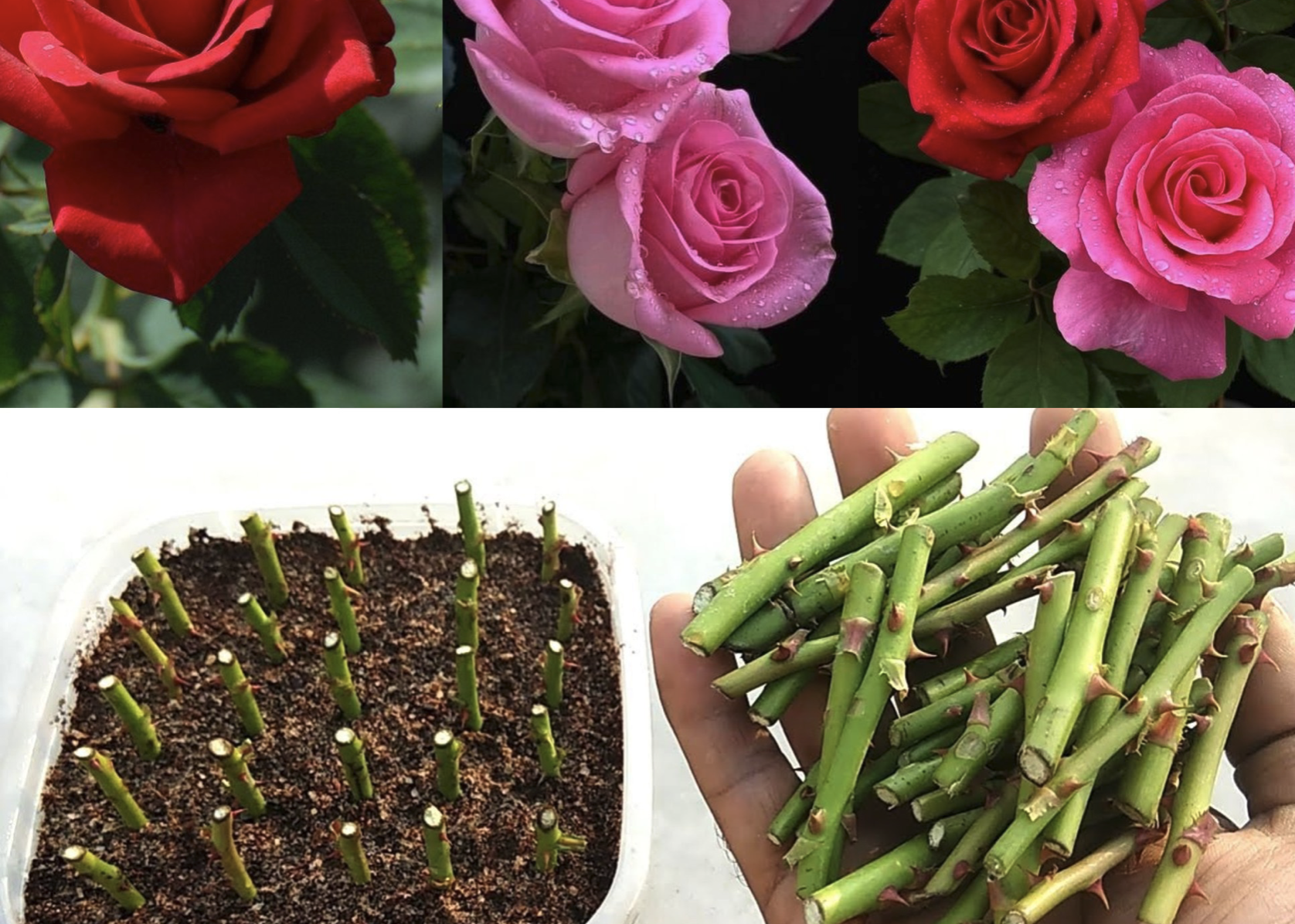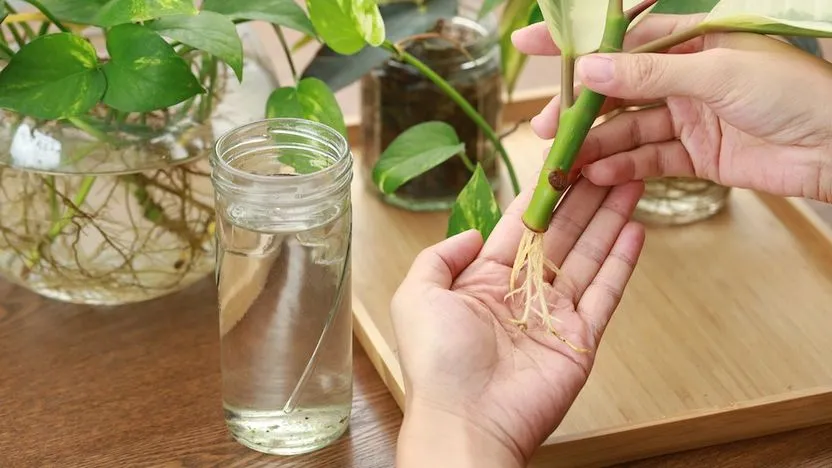How to propagate roses from cuttings


Do you have a plant that thrives splendidly in your backyard? Or perhaps a neighbor’s rose bush that’s stolen your heart? Maybe a favorite rose nearing its twilight years?
This is the ideal time for a cutting.
Discover the art of stem cutting propagation and embark on a journey to clone your cherished plant companions. This technique holds the key to replicating that magnificent floribunda that has stolen your heart.

Yet, brace yourself for the not-so-rosy news: your success rate is likely to range from 50 to 75 percent. Rose enthusiasts are constantly tinkering with methods to tip the odds in favor of thriving cuttings. We can tap into their wisdom and trials. However, even the most seasoned rose cultivators often grapple with this success rate.
But fear not! This simply implies that planting a few extra cuttings might be prudent to ensure your desired outcome. If an abundance sprouts forth, consider them delightful gifts waiting to be shared.
Moreover, armed with this comprehensive guide, you're poised to gravitate towards the higher echelons of the success rate spectrum. We've curated the finest advice and insights from rose growers spanning the globe.
What Lies Ahead:
Is it awry to revel in the prospect of getting my hands delightfully dirty? If so, I'd rather not be right. Let's dive in!

Optimal Time for Cuttings
A quick online quest yields a plethora of opinions suggesting late winter or early spring as the prime moments for taking cuttings. Some vouch for summer, while others swear by fall. The cacophony of conflicting advice can be dizzying.
The truth is, the optimal timing hinges on variables like your location, climate, objectives, and circumstances. While you could theoretically root cuttings during the growing season, the pinnacle of success gleams under mild conditions – be it cool or warm.
Frigid, icy conditions are unwelcoming, just as extreme heat induces stress in plants. This leaves us with spring and fall in most temperate zones, and winter in regions graced by a freeze-free existence.
Numerous experts advocate for fall cuttings, post the fading of blossoms on your plant. This method has proven most fruitful for me, but be mindful that it entails indoor nurturing throughout winter.
Opting to root cuttings directly in your garden? Spring is your cue, as new growth emerges. This approach suits me when I prefer not to invest months tending to an indoor plant.

In my observation, cuttings started directly outdoors often outpace their indoor-started counterparts when it comes to growth. Perhaps, it's their extended acclimatization period that contributes, sparing them the jolt of transitioning from indoor to outdoor life.
Cuttings Preparation
Before your blade makes contact, ensure the plant yielding your material is in robust health. Discard any displaying rust, mildew, fungus, insect invasions, or ailments.

Old, woody stems and overly soft, pliable sections should be avoided. Opt for fresh new growth, often tinted red or purple. While a dash of red (signifying youth) is permissible, the main stem area for cutting should be vibrant green.
Though technically feasible, cuttings from mature and young growth tend to root less effectively, based on my experience. Fall cuttings should stem from areas with at least six leaf sets, sporting faded blooms or even nascent hips. Choose an eight to nine-inch segment from pencil-thick growth, executing the cut at a 45-degree angle. Repeat as needed.
Source: https://craftygoldenmom.com
DISCLAIMER: THIS WEBSITE DOES NOT PROVIDE MEDICAL ADVICE The information, including but not limited to, text, graphics, images and other material contained on this website are for informational purposes only. The purpose of this website is to promote broad consumer understanding and knowledge of various health topics. It is not intended to be a substitute for professional medical advice, diagnosis or treatment. Always seek the advice of your physician or other qualified health care provider with any questions you may have regarding a medical condition or treatment and before undertaking a new health care regimen, and never disregard professional medical advice or delay in seeking it because of something you have read on this website.
